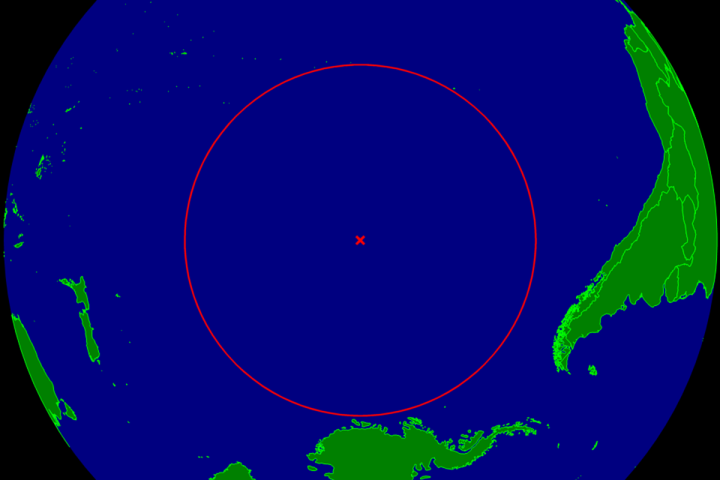
Luckily, the European Space Agency is investigating means to remove dangerous debris from space. But massive nets and robotic arms aren’t the only ways to get objects out of Earth’s orbit – they can also be instructed to crash into a “spacecraft cemetery” once their service is complete.
Russia has already buried over 190 objects in the cemetery (formally known as the Oceanic Pole of Inaccessibility), which comprises a patch of Pacific Ocean 2,000 miles north of Antarctica, reports Popular Science. The United States meanwhile has crashed 52 objects there, Europe has crashed eight, Japan six, and SpaceX one.
The goal is to keep these decommissioned objects out of orbit and at a safe distance from any human being. When orbiting objects return to Earth’s atmosphere, they’re often accompanied by immense heat and destruction. By crashing the objects in this isolated region in the Pacific Ocean, NASA and others calculate a less than 0.0001 percent chance that an object or part of its debris will kill a person upon its reentry.
ISS still has more than a decade left in service but will find its final resting place in the space cemetery around 2028. The mission to decommission and return will be tremendous and quite a spectacle, as the 500-ton, football field-sized station comes barreling down to Earth. But we don’t recommend you hang around the Oceanic Pole of Inaccessibility around that time.
Editors' Recommendations
- Starliner spacecraft just took a major step toward first crewed flight
- NASA, Boeing delay Starliner’s first crewed flight again
- NASA and Russian satellites just miss in ‘too close for comfort’ pass
- Dramatic images show a large satellite tumbling toward Earth
- One last orbit: how and why NASA kills its own spacecraft


